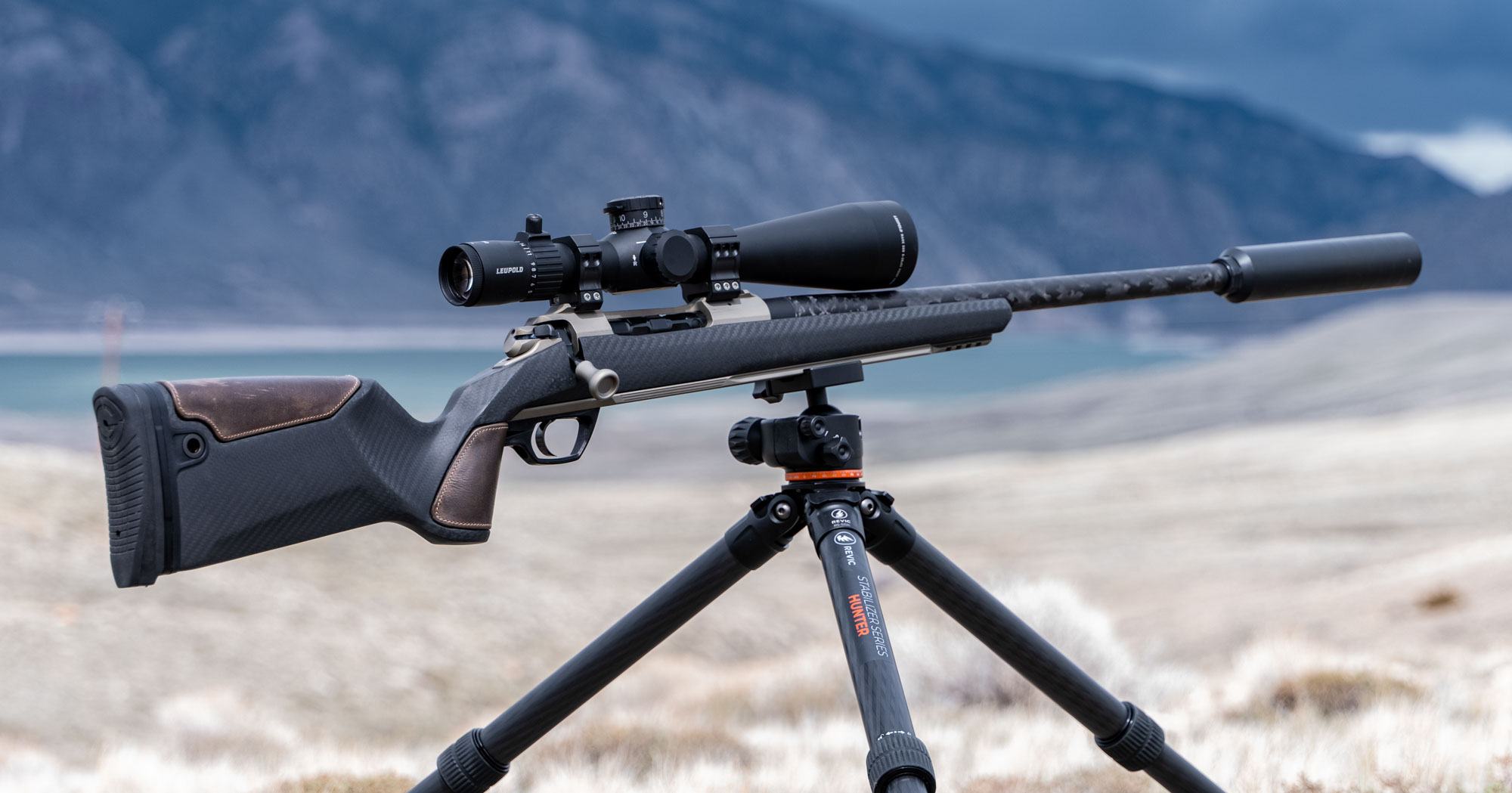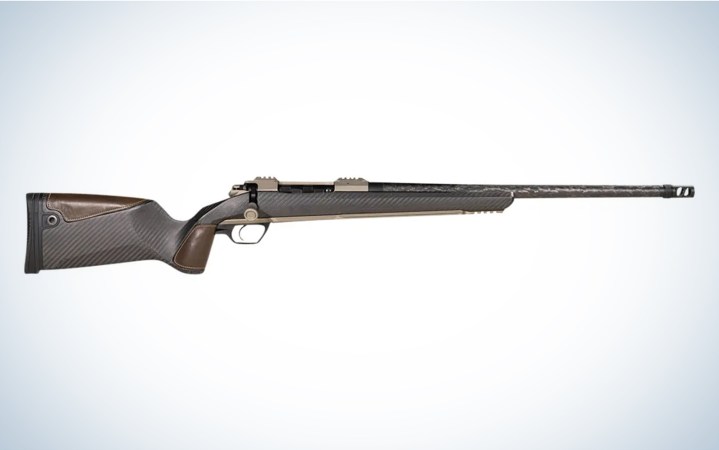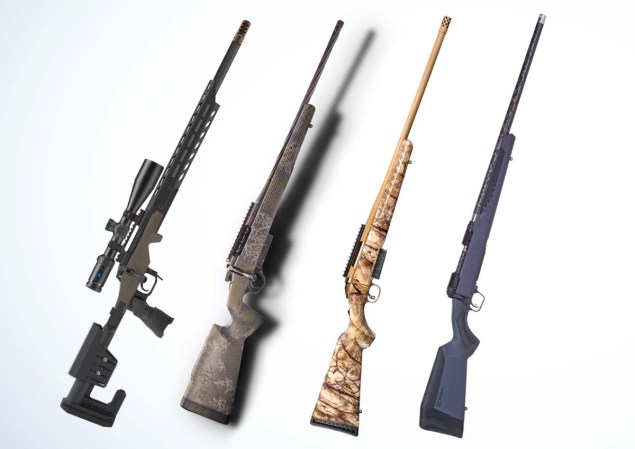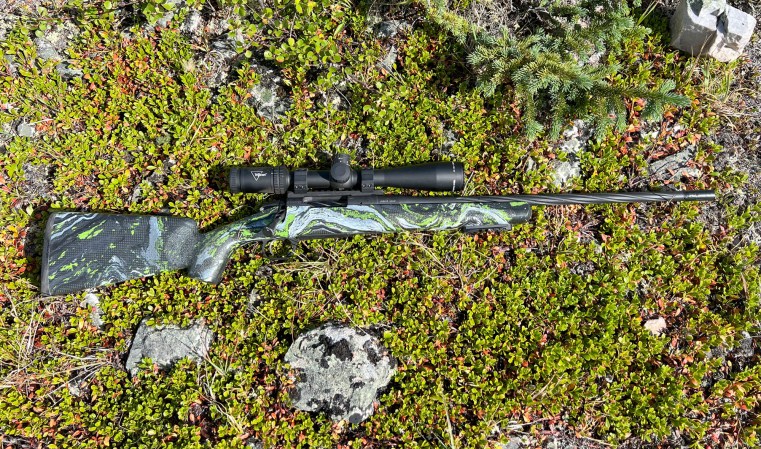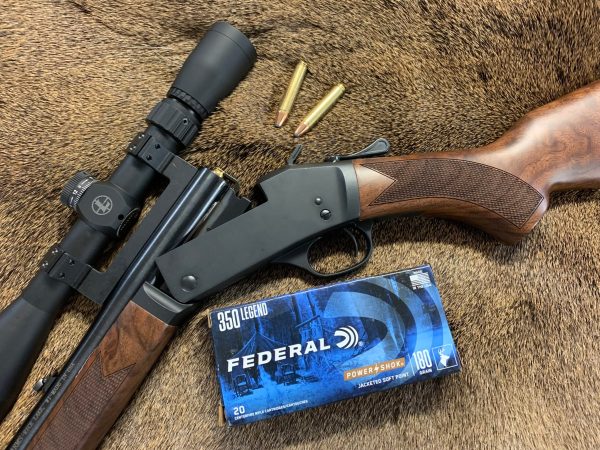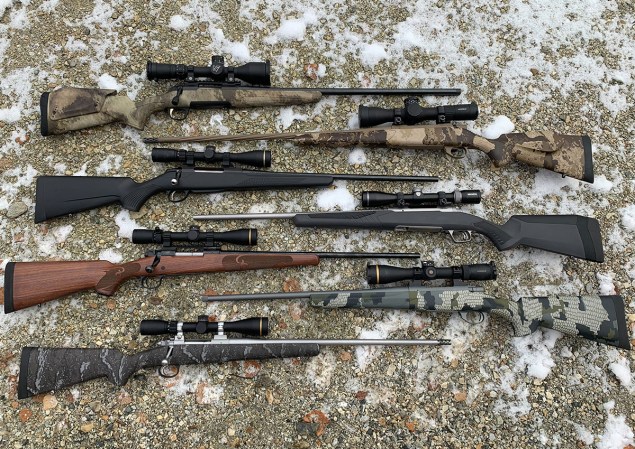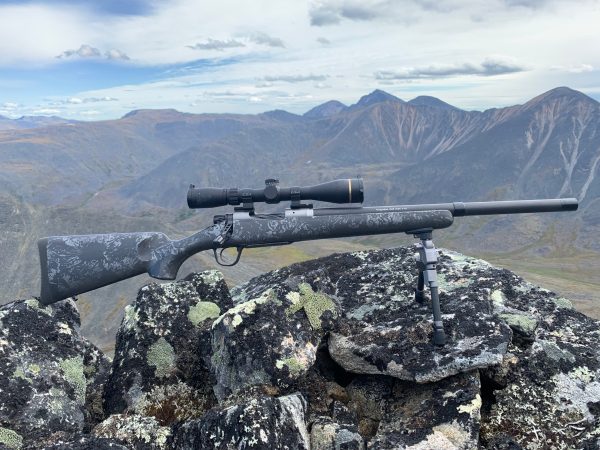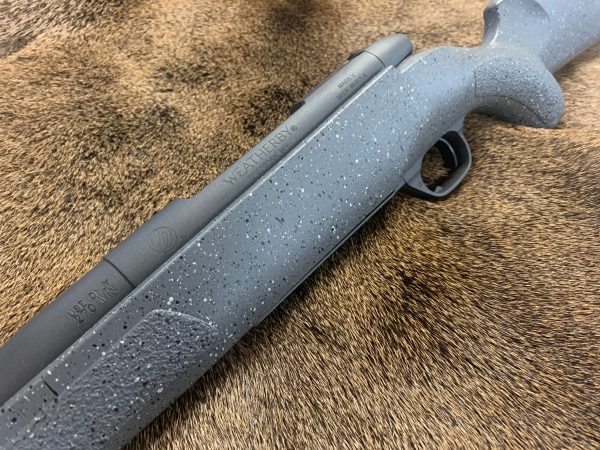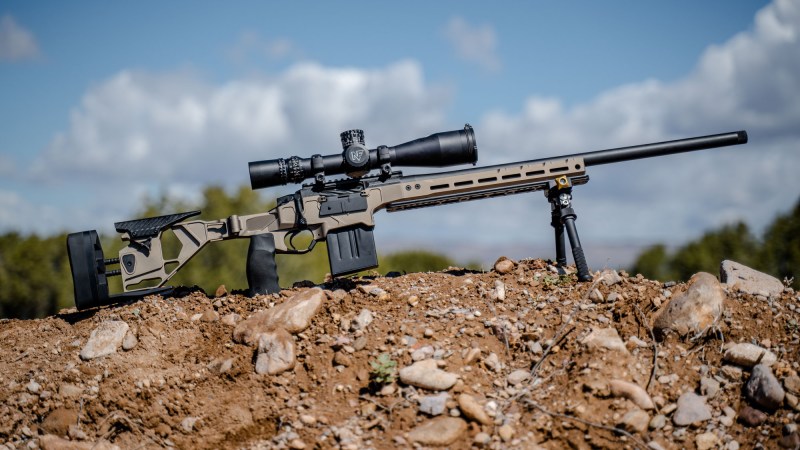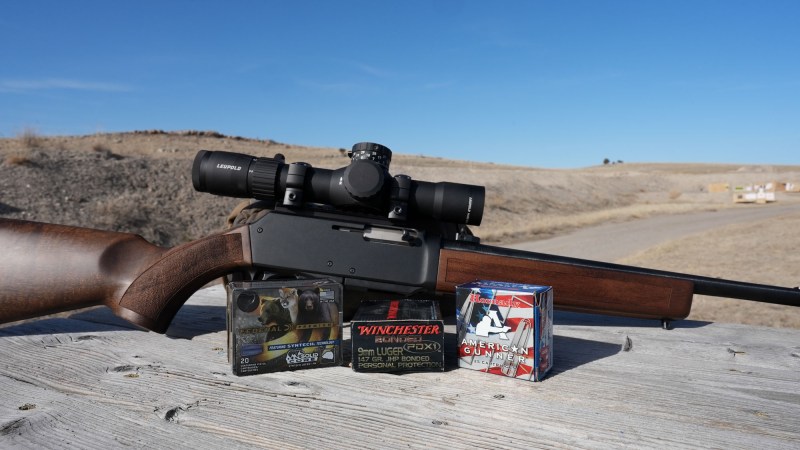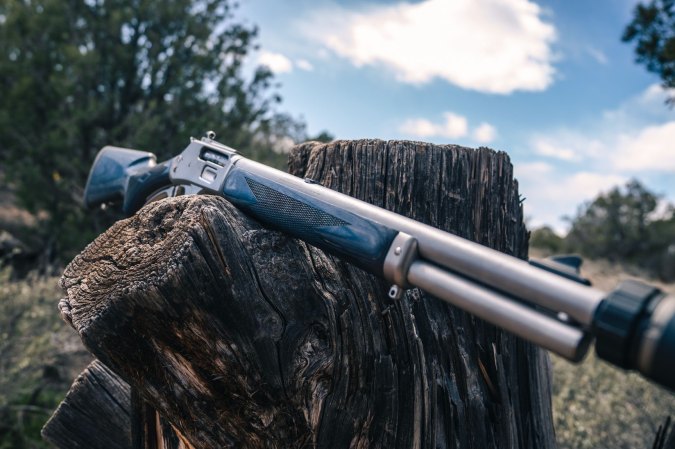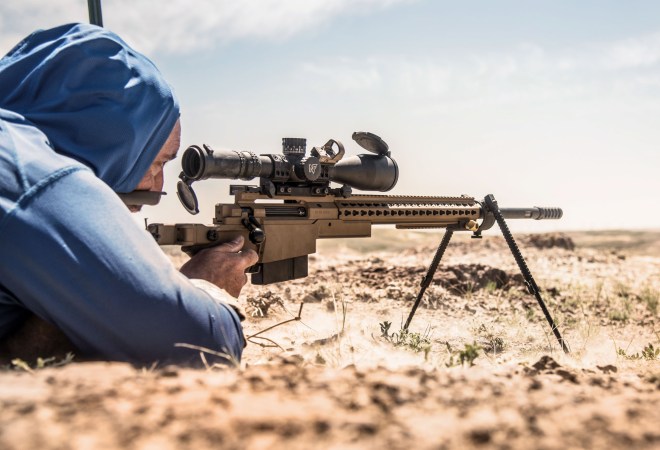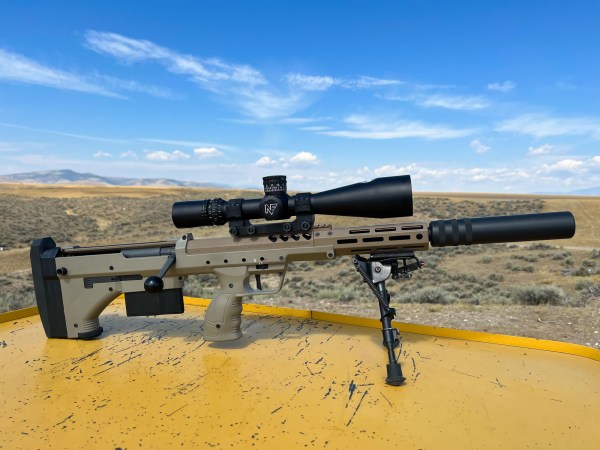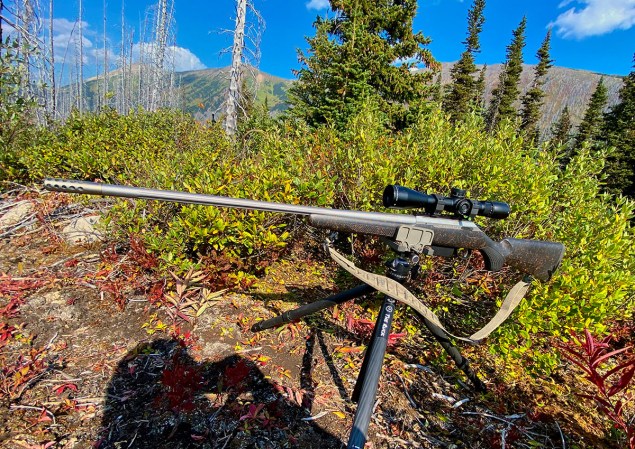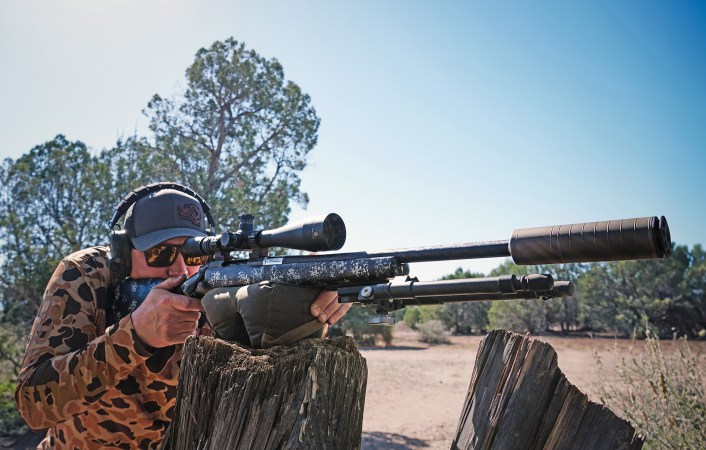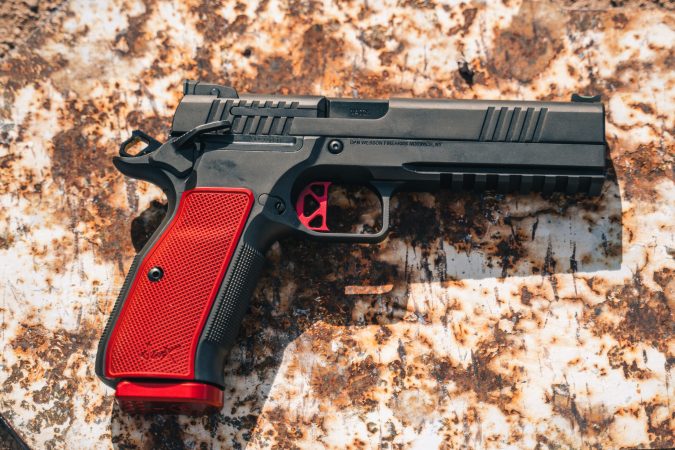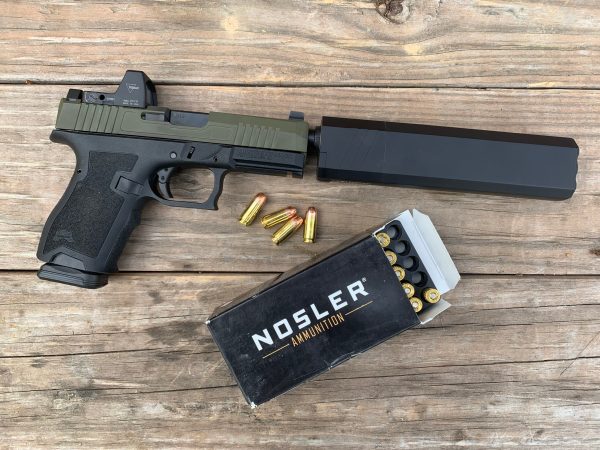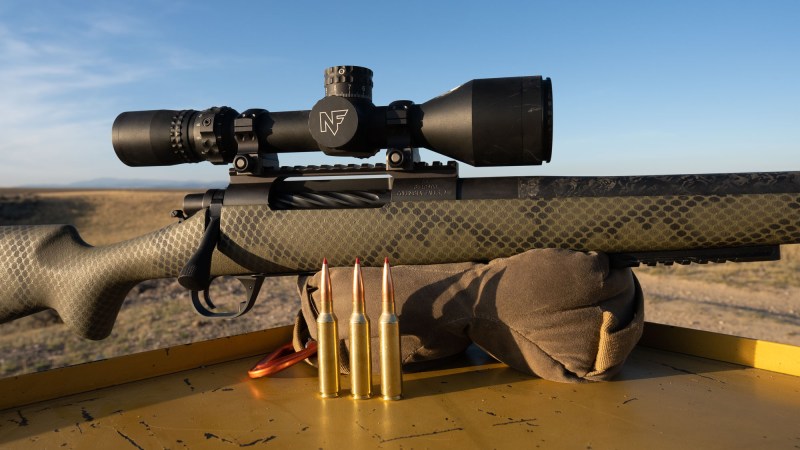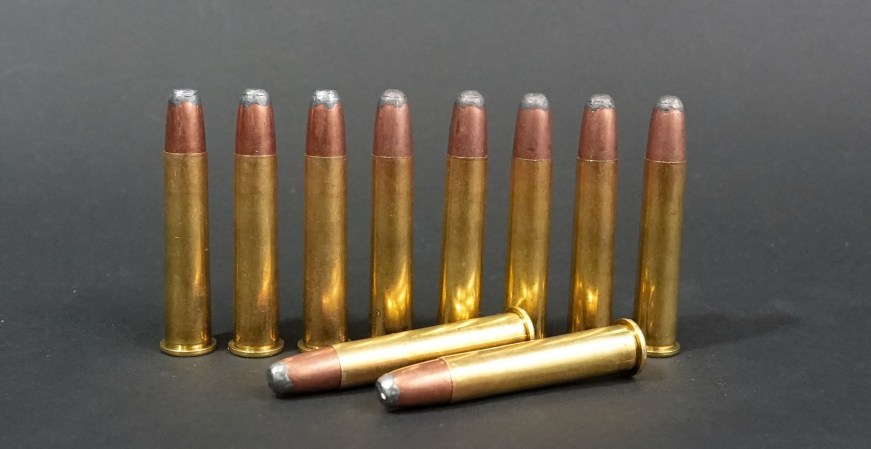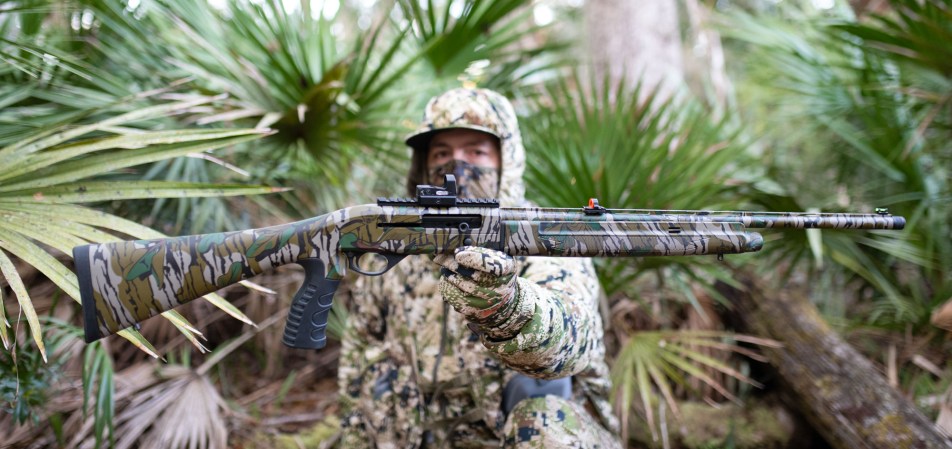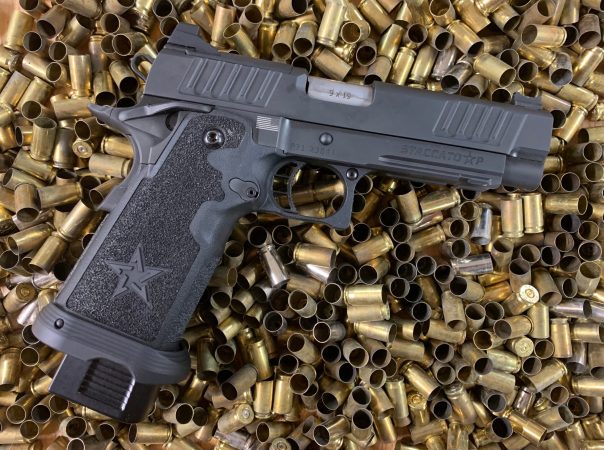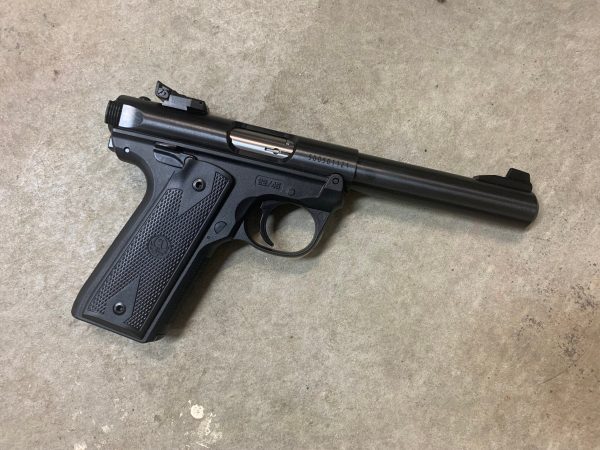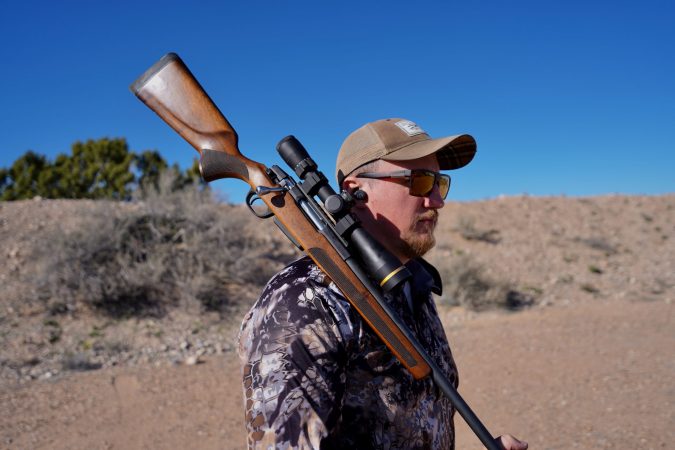We may earn revenue from the products available on this page and participate in affiliate programs. Learn More ›
The Gunwerks Nexus is an innovative and ambitious rifle. Gunwerks, based out of Cody, Wyoming, has built its reputation on accurate, long-range rifles that are marketed with a dash of bravado. “One thousand yards out of the box” is their slogan. That certainly establishes an expectation for the hunter or shooter who ponies up for one of these pricey gems.
The Nexus is Gunwerks’ newest offering and, in my eyes, the most interesting rifle in their lineup. It defies easy categorization. The rifle incorporates elements straight out of the competition realm—like the full-length ARCA rail under the fore-end, a switch-barrel action, and a nearly vertical grip with pronounced thumb rests—with touches like the leather insets on the grip and comb, more typical of a bespoke rifle that is to be babied rather than subjected to hard use.
Such disparate aesthetics could be visually jarring, but the Nexus manages to pull it off. The rifle is dressed up for a night on the town but will roll up its sleeves when it is time to brawl. It is also one of the most smartly configured rifles I’ve used in recent memory—every detail was thought through by people who know their craft.
Gunwerks was able to achieve this because they designed the rifle completely in house. The action, barrel system, and stock are all new. It’s thoroughly original, a rarity in a world awash with 700 clones and timid line extensions.
Gunwerks Nexus Specs and Key Features
Gunwerks Nexus
- Action: Six-lug bolt (two rows of three) with 65-degree throw
- Chambering: 6.5 PRC (tested); 7 PRC and 300 PRC also available
- Stock: Carbon fiber, with leather inserts and full-length ARCA rail along fore-end
- Barrel: 20 inches, carbon-fiber wrapped, with a 1:8 twist, and threaded 5/8-24 at the muzzle
- Length: 40.5 inches
- Capacity: 3+1
- Weight: 6 pounds, 14 ounces (measured)
- Trigger: TriggerTech Primary
- Trigger Pull: 2 pounds, 1 ounce (measured)
- Price: $5,975 (Extra barrels run $1,495)
Configuration For Evaluation
- Scope: Leupold Mark 5HD 3.6-18×44
- Rings: Seekins 35mm Scope Rings
- Suppressor: Gunwerks 6ix+ Titanium
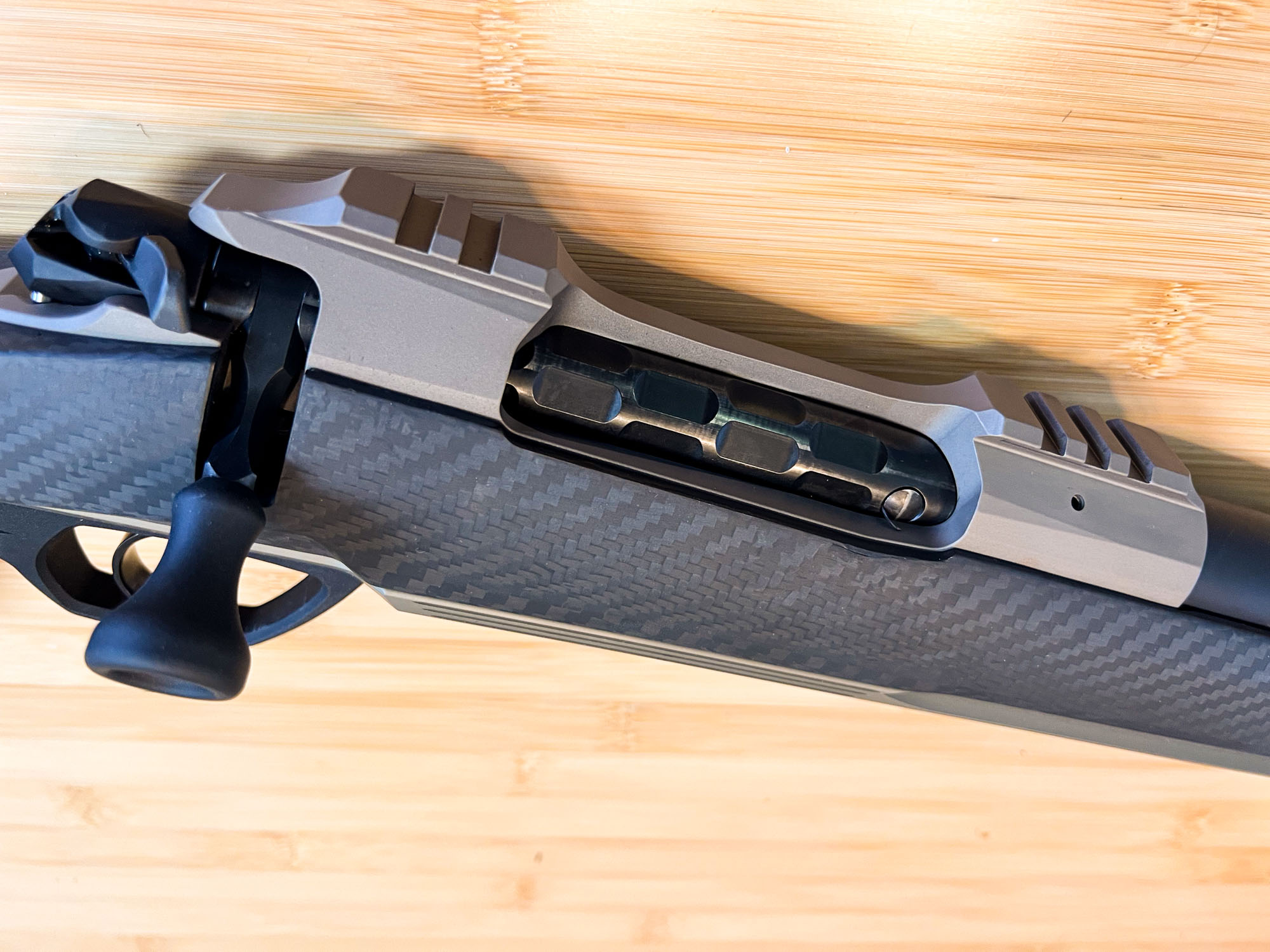
Understanding the Gunwerks Nexus
Categorizing the Nexus might be tricky, but one way to understand the rifle is by asking who would find it appealing. One answer is a person who is equally serious about hunting and shooting and who wants a rifle that doesn’t compromise in either area.
Given the Nexus’ showy looks, it is also fair to say the rifle will appeal to those who like their gun to make a statement. It is no humble wallflower with its distinct lines, bold choice of materials, and color selection.
Gunwerks Nexus: Built for the Hunter
Dividing the rifle’s qualities between hunting and shooting is a bit artificial as there are features that apply to both. But it does help unpack the distinct hybrid nature of the Nexus.
From the perspective of the hunter, here then are some of the most appealing elements of the Nexus.
Goldilocks Dimensions
First, there is the overall weight, length, and balance of the rifle. Empty, my rifle in 6.5 PRC weighs just under 7 pounds. That’s a comfortable middle ground for a big game rifle, making it not too heavy to carry but blessed with enough heft to make recoil tolerable.
The 20-inch barrel is a smart choice for a hunting rig. With a thread protector on the muzzle the rifle is just over 40 inches long. That’s nice and compact, making the rifle easy to maneuver through brush and in tight spaces.
Even with a suppressor screwed to the muzzle, which is threaded 5/8-24, the Nexus still doesn’t feel unwieldy. I did the majority of my shooting with the Gunwerks 6ix+ Titanium suppressor attached. That can, which weighs just 9.2 ounces, balances well with the rifle.
Speaking of balance, the Nexus’ center of mass is just in front of the magazine well when the barrel is naked or wearing the two-port self-timing muzzle brake that it comes with. That, too, is about ideal for brisk handling. With a suppressor, the rifle becomes a bit muzzle-heavy, but not distractingly so.
Smooth Action
The six-lug action (two rows of three) has a compact 65-degree bolt throw. Three-lug actions often have a heavy bolt lift, but the Nexus’ designers overcame that issue. The amount of force required to open the bolt is moderate and it runs smoothly in the action’s raceway. In fact, it is one of the slickest actions I’ve ever handled.
The full-diameter bolt body, which is machined with flats to reduce weight and friction (and is quite handsome, I might add), helps the bolt slide freely when the rifle is tipped up at only a slight incline.
As a result, the Nexus has an impressive ability to stay on target while cycling the bolt after a shot and deliver quick follow-ups, both very beneficial when hunting.
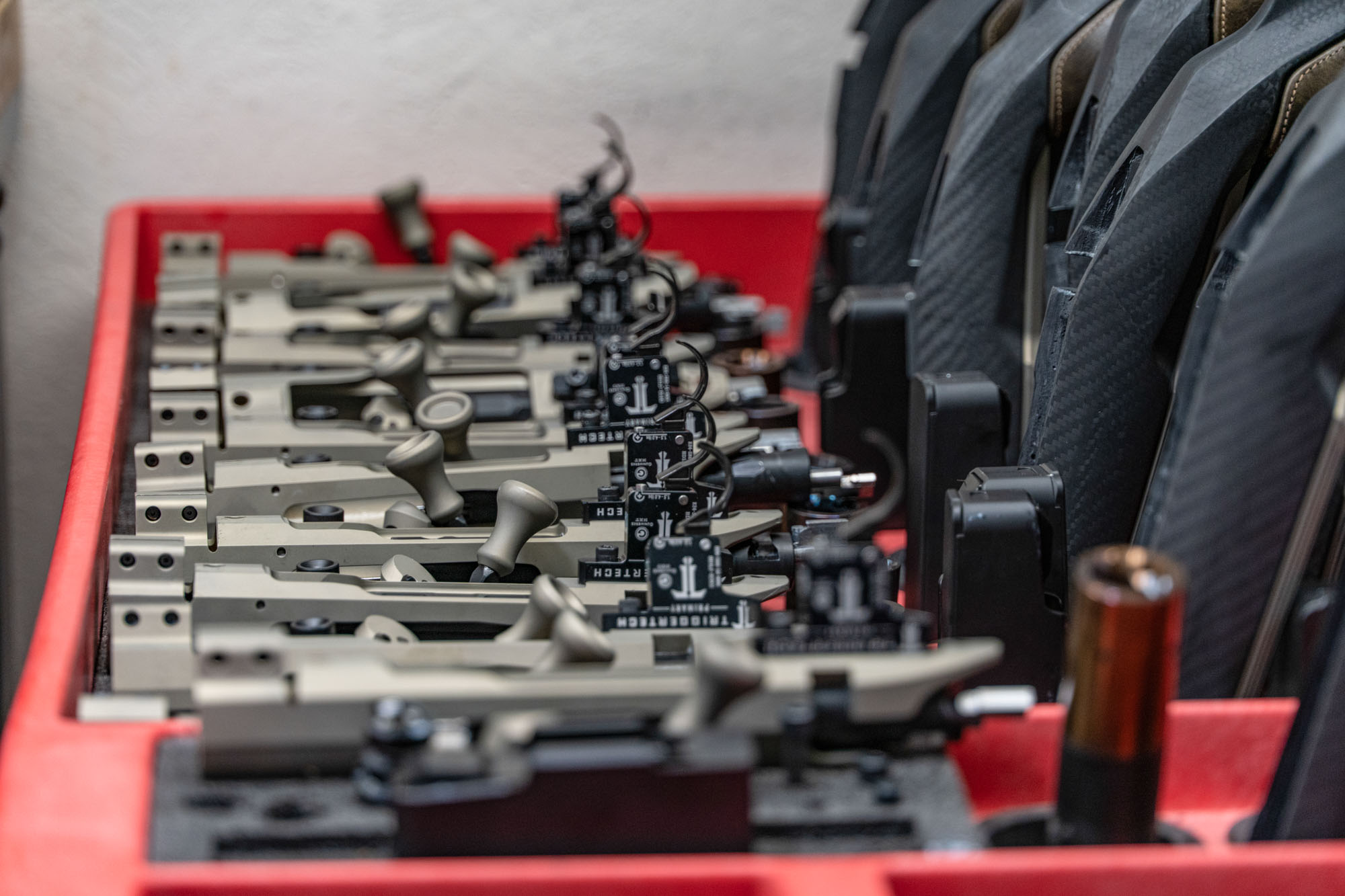
Accessible Ejection Port
The ejection port on the Nexus is large and easy to access even when a scope is mounted. This lets you get another round in the rifle quickly should you run it dry. It also makes clearing jams or debris a simpler proposition. The generously sized loading port also removes weight from the rifle.
Aluminum Alloy Receiver
Another source of weight savings is the Nexus’s aluminum alloy receiver. Gunwerks was able to use an aluminum alloy—7075 aluminum specifically—because the barrels incorporate a barrel extension, which is where the bolt lugs lock up. The pressures generated by firing a round are therefore contained within the extension and not directly transmitted to the receiver itself.
This alloy is known for its strength and durability. It is finished with a Type III hardcoat anodizing, a process that allows the metal to resist corrosion and abrasion. It’s the type of anodizing found on quality cookware, sensitive electronics, and military equipment.
Carbon-Fiber Barrel
The barrel on the Nexus is wrapped in carbon fiber and is another way the rifle trims weight. Carbon-fiber, whether in the stock or barrel, has become increasingly popular on high-end rifles, and Gunwerks is making theirs in house with a single-point cutting technique.
The accuracy of these barrels is excellent. I’ll go into more detail below, but my rifle averaged .75-MOA with five-shot groups across three different 6.5 PRC loads, which is fabulous.
Three-Position Safety
The Nexus has an elegant three-position safety on the bolt shroud. In the safe position, the firing pin is physically disconnected from the trigger and the bolt is locked in place. In the middle position the gun is still on safe but the bolt can be opened to access the chamber. This has been a preferred system for hunters for decades, and it is great to see Gunwerks incorporate this feature into their new NTX action.
One cool detail is that when the safety is moved to the forward “fire” position a red dot rotates into view in the back of the bolt shroud, giving the operator a visual indication of the rifle’s status.
While the safety flicks off easily as the rifle is brought to the shoulder, it requires excessive effort to move the tab from “fire” to the middle “safe” position. While not insignificant, this is ultimately a small issue, and in my view isn’t a deal breaker. This is the one and only hiccup I experienced with the rifle.
Gunwerks has a fix for this in the works, and their new rifles are shipping with an improved system that is smoother. Once I get an upgraded safety for my rifle, I’ll update this review with my impressions.
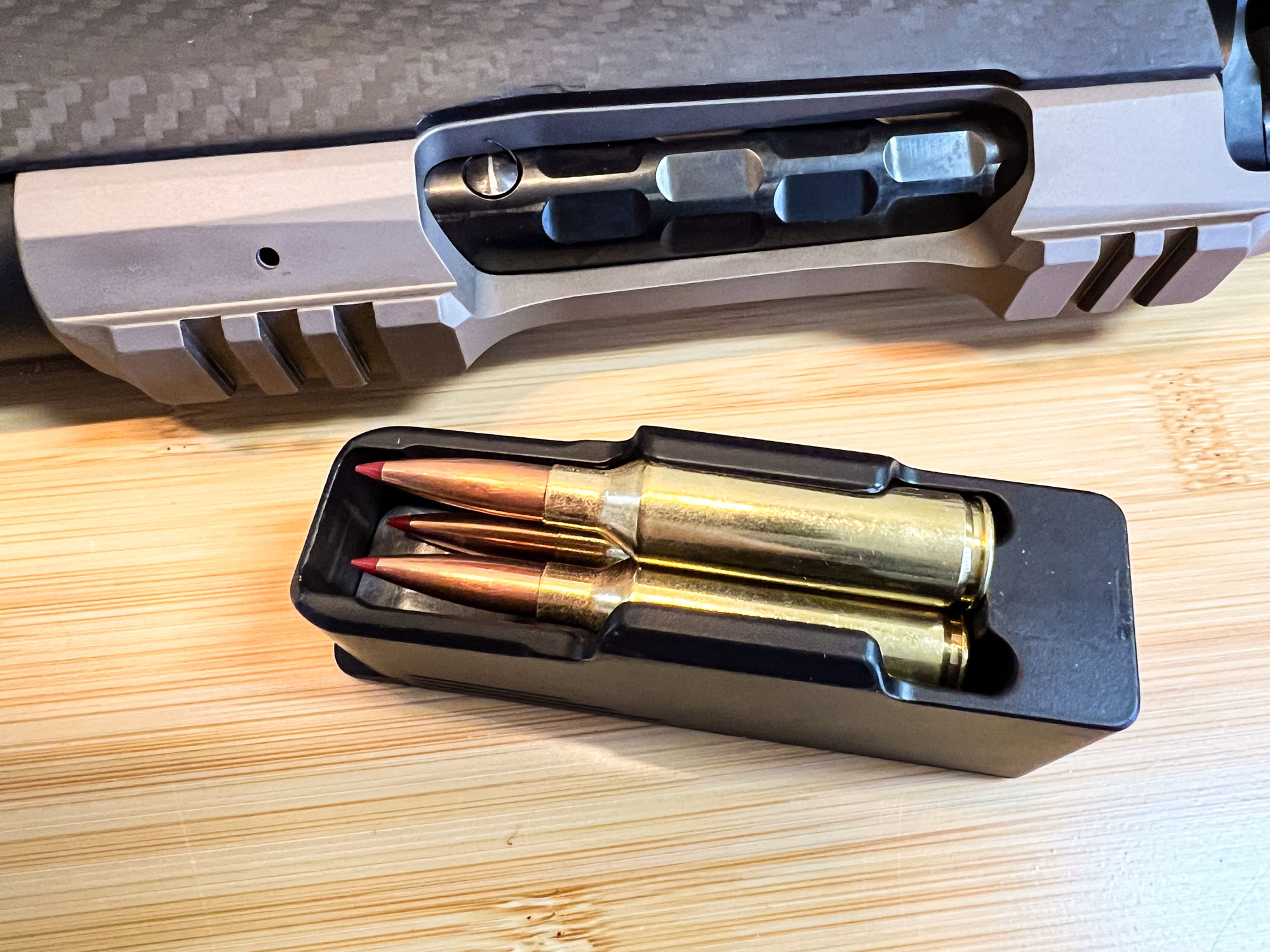
Flush Magazine
Gunwerks went to great lengths to furnish the Nexus with a flush magazine. Designing magazines is surprisingly complicated, and the company’s initial efforts didn’t pan out. The first iterations didn’t feed smoothly when loaded to capacity and were difficult to seat in place.
But they went back to the drawing board and managed to give the magazine enough breathing room to solve the issue, and the magazine works well now.
Because it fits flush with the bottom of the rifle (actually the full-length ARCA rail), the magazine enhances the rifle’s carrying and handling qualities, while still managing to hold 3+1 rounds of the chunky 6.5 PRCs.
Seating the magazine requires a slight rocking motion—it doesn’t push straight in. You press the rear of the magazine up first and then click it into place. It’s an easy motion to master.
The magazine release is recessed at the front of the mag well. It’s simple to actuate but won’t snag on anything the rifle brushes against, so you don’t need to worry about the magazine popping free when you don’t want it to.
The magazine is a double-stack system that’s easy to load and unload. Mine has fed flawlessly with zero issues.
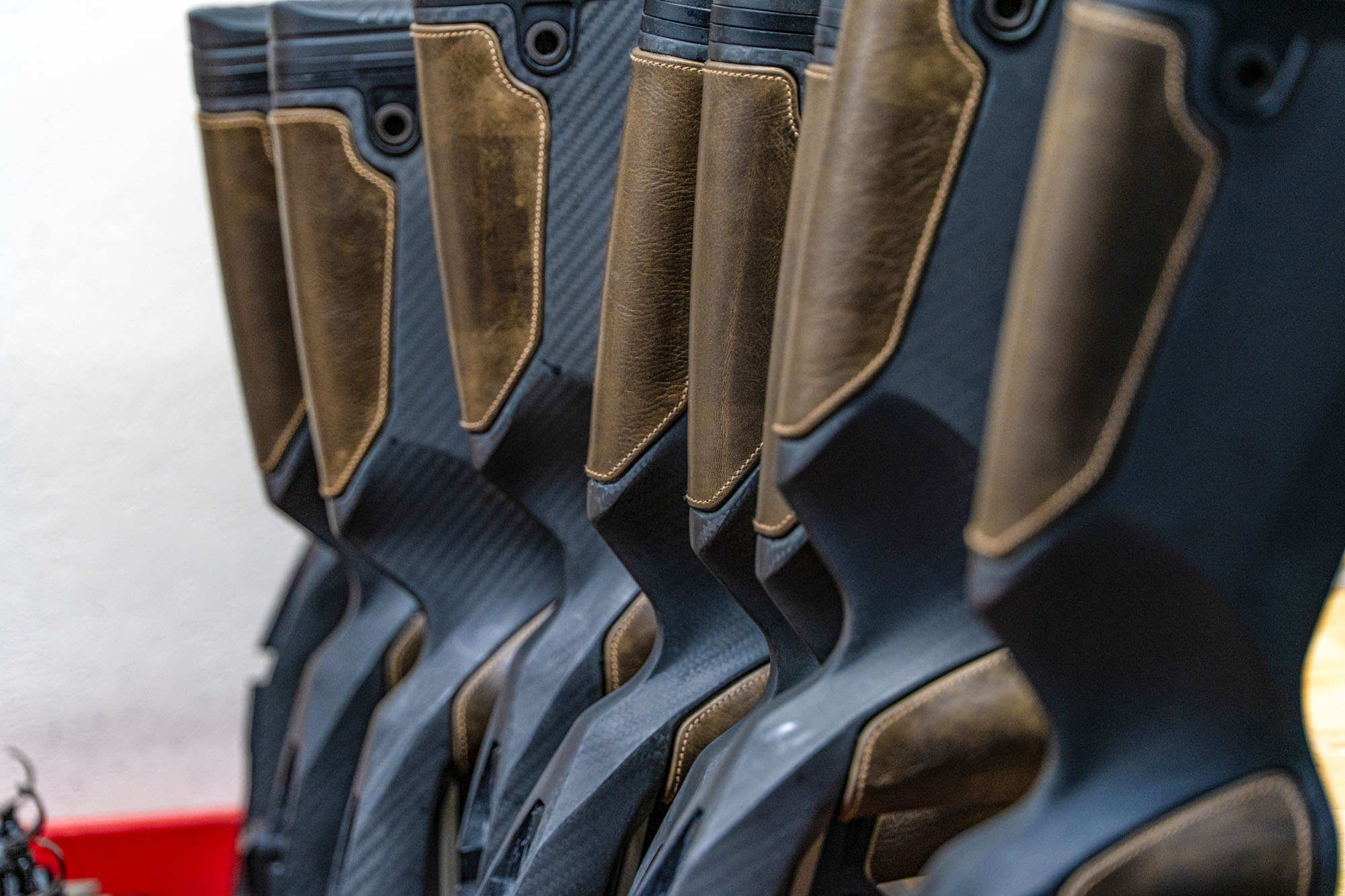
Eye Candy Aesthetics
For long-range shooters, rifles often look like, and are treated as, tools. In general, hunters care more about a rifle’s appearance. After all, they will spend more time gazing at their rifle in the field than they will shooting it.
While beauty is in the eye of the beholder, I think the Nexus has a very cool aesthetic. It has a futuristic look that’s nicely complimented by the leather inserts on the grip and comb.
The anodized bronze finish on the metal ties it all together, bridging the gap between the carbon-fiber and saddle leather.
On top of that, the sculpting in the metal and stock are functional and attractive. While the rifle won’t appeal to every shooter—nor is it meant to—I give Gunwerks full marks for making something this distinct.
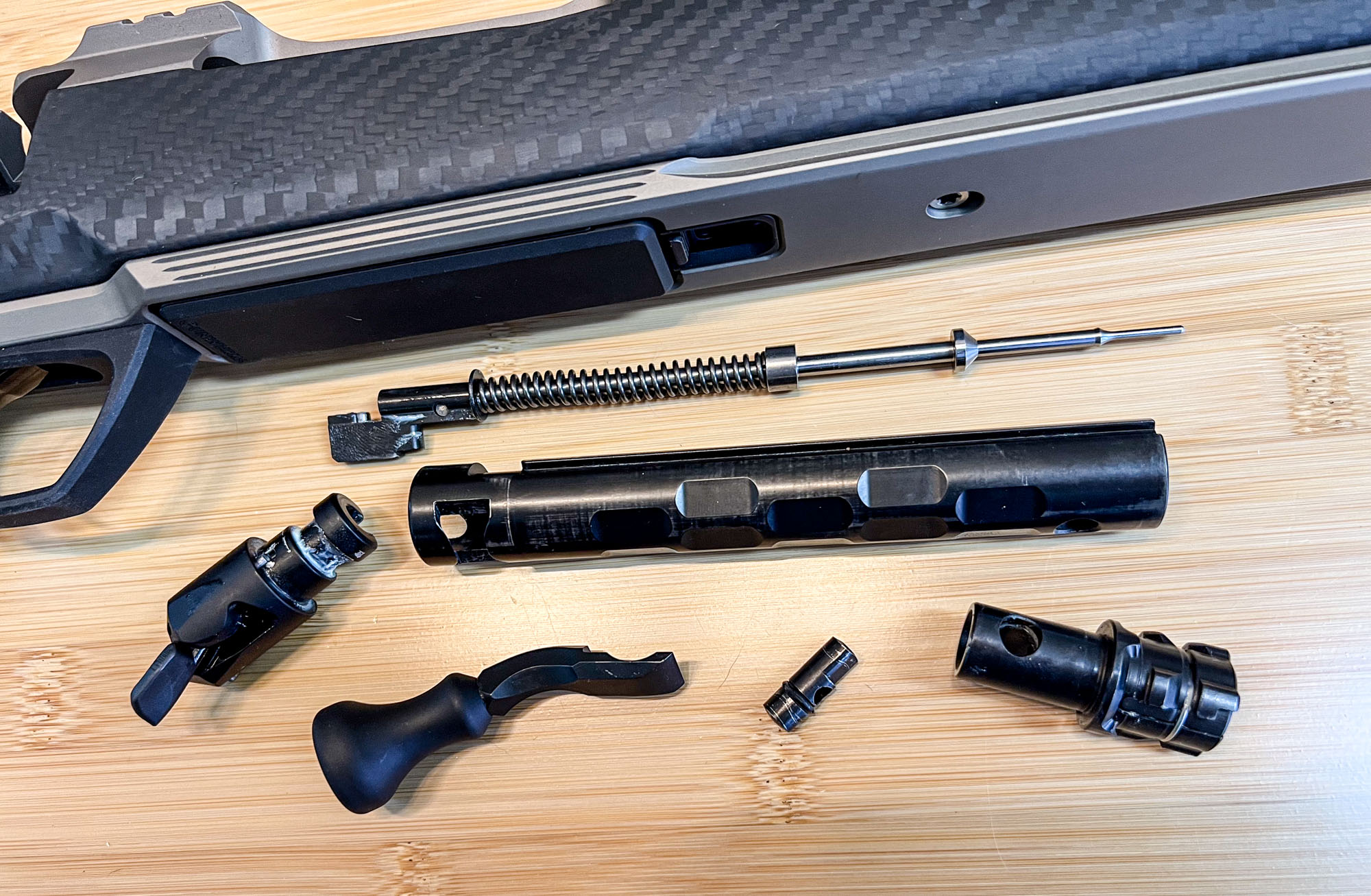
Gunwerks Nexus: Built for the Shooter
Switching gears, the Nexus has numerous features in line with high-end precision rifles. These enhance the rifle’s raw accuracy, versatility, ease of use and maintenance, and practical field marksmanship.
Tool-less Takedown
The bolt on the Nexus is removed from the action by depressing the unobtrusive tab at the rear of the right-hand side of the receiver. The fact that it is small, elegant, and easy to use is another example of the thoughtfulness that went into the rifle’s design.
Taking the bolt apart is simple. After rotating the bolt shroud a half turn the firing pin assembly pops free. If the rifle’s safety is in the middle position before you remove the bolt, the effort needed to turn the shroud is minimal. That’s thanks to how the safety holds the firing pin back and out of contact with the bolt body. But even with the safety on “fire,” the procedure is a snap—the shroud requires just a bit more force to turn.
The bolt breaks down into the following pieces: bolt handle, bolt shroud, firing pin, and bolt head.
The bolt handle slides out of a dovetail cut in the bolt body as soon as you rotate the bolt shroud. Presumably Gunwerks will offer different style bolt handles in the future.
The bolt shroud and firing pin come apart by moving the safety to “fire,” which you can do before removing the bolt from the receiver or after the bolt is out.
To remove the bolt head (which allows you to run cartridges with different bolt face diameters) you drift out the retaining pin just behind the bolt head and pull the bolt head free.
This gives you access to every nook and cranny in the bolt to give it a thorough cleaning and lubing.
Uniform T-25 Torx Fasteners
Gunwerks made the rest of the Nexus easy to service by using Torx T-25 fasteners at every critical juncture. With just one driver and a torque wrench you can take the action out of the stock and remove the barrel from the action, which is as much as you’ll need to do to maintain the rifle.
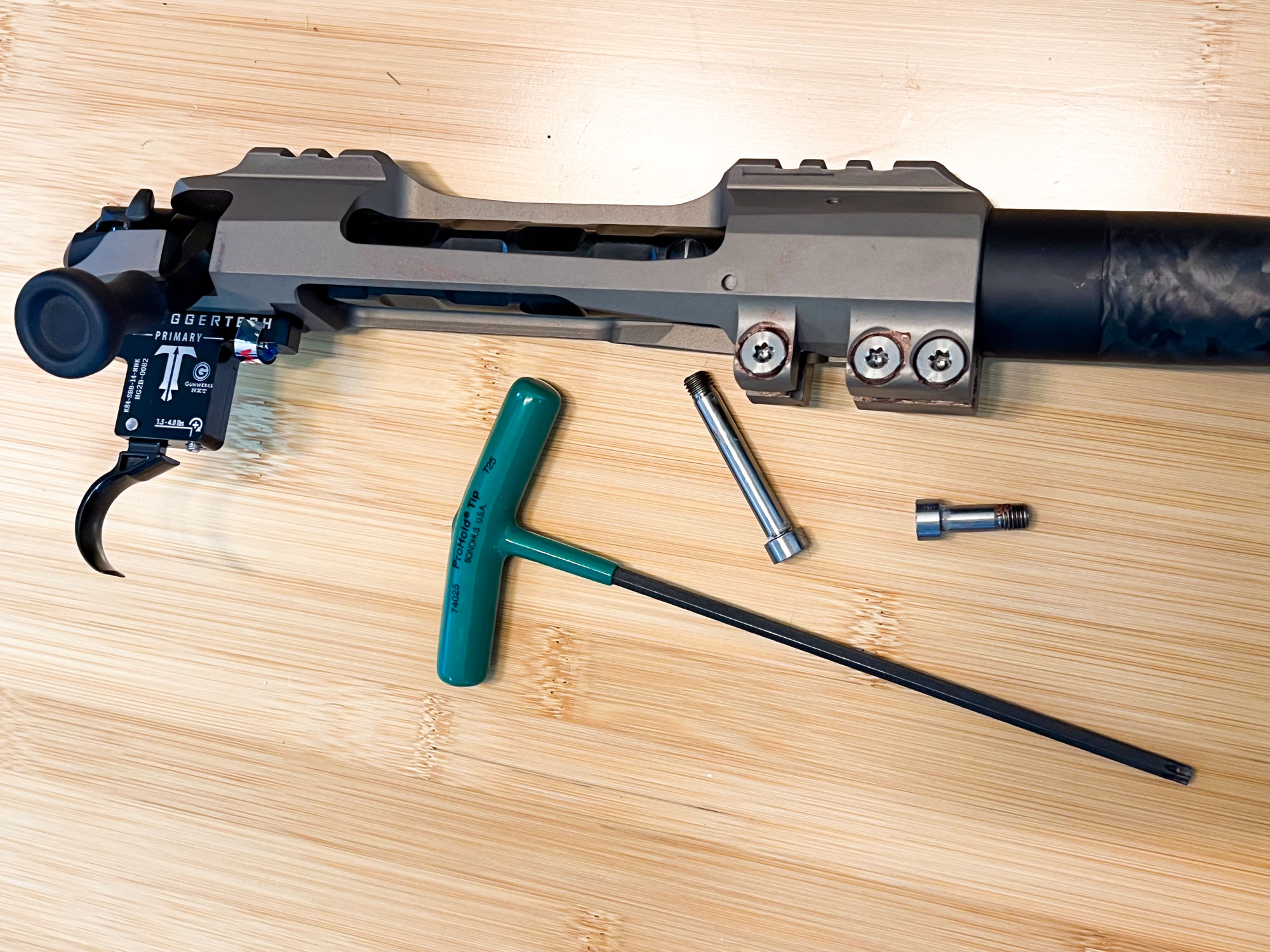
Gunwerks Nexus Quick-change Barrel
The barrel is held in place by three bolts that compress a sleeve on the receiver that the barrel extension slides into. The barrel extension has an indexing notch that makes it impossible to misalign the barrel and receiver.
This Gunwerks video details the barrel change process, but the main thing to be aware of is that when you install a new barrel—or reinstall the one you took off—you need to put the bolt back in the receiver and close the action before tightening the screws. This ensures correct headspace.
Set your torque wrench to 60 inch-pounds and tighten the bolts from back to front, repeating the sequence three times to make certain everything is correctly torqued.
A Note on the Action Screws and Wedge Block
The action and stock are held together with three fasteners. The rear two are the action screws and the one farthest forward tightens a wedge block. When removing the stock from the action, start by loosening the wedge block screw. When you put the stock back together, start with the rear action screw and go forward, tightening the wedge block screw last.
Set your torque wrench to 40 inch-pounds and repeat the tightening sequence twice.
As I’m sure you know, the action screws are what hold the action and stock together. The reason for the wedge block is to provide additional support. The block stakes the action in place, in a manner of speaking. That support keeps the action and stock from shifting and, according to Gunwerks, improves the rifle’s accuracy, specifically with cold-bore first shots.
The Importance of Anti-Seize Lubricant
If you invest in a Nexus, be sure to purchase some copper or nickel anti-seize lubricant. The action, made of aluminum alloy, and action screws, made of titanium, are relatively soft, and therefore prone to galling, especially when tightened to each other.
When using anti-seize lubricant you want to not only add a dab to the threads, but also to the underside of the head of the fastener, which is another area that’s prone to binding.
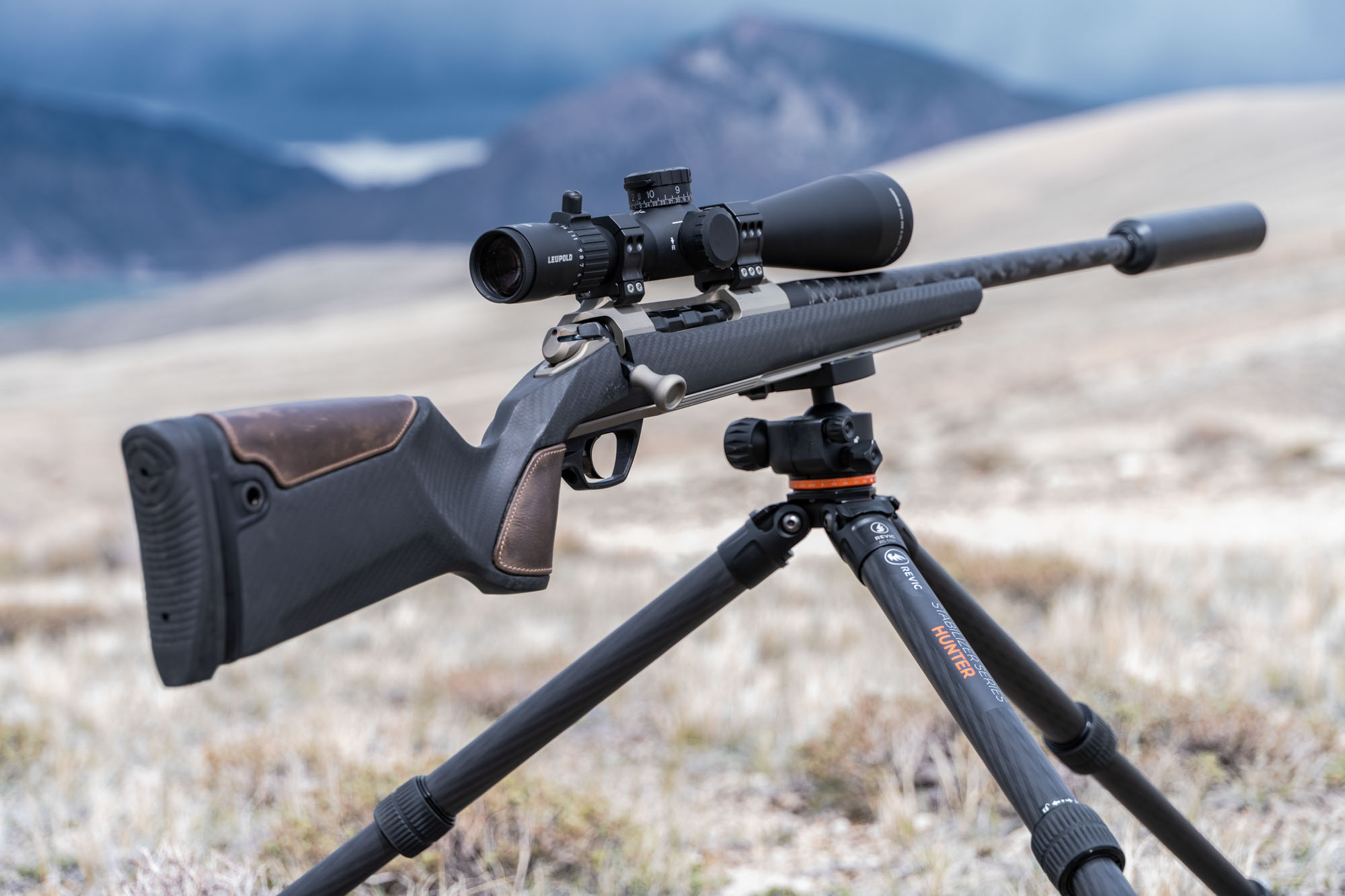
ARCA rail with Picatinny Section
This machined aluminum piece runs from the tip of the fore-end (where the four-slot Picatinny section is located) to behind the trigger guard, forming the rifle’s bottom metal. The middle seven inches of the rail is an ARCA dovetail, which is the rifle’s most overt nod to the precision rifle world.
The Picatinny rail is ideal for mounting a bipod and the ARCA rail lets you clip into a tripod to get stable.
Integral 20-MOA Rail
The top of the aluminum alloy receiver incorporates integrally machined sections of Picatinny rails, with three slots cut in the forward section and two slots across the rear. Gunwerks gave the rails a 20 MOA declination to leverage the rifle’s accuracy for longer shots.
The rails offer plenty of real estate to mount any scope you might care to use and get proper eye relief.
Gunwerks Nexus Stock Geometry
The sleek lines and contours in the stock augment the rifle’s head-turning looks, but first and foremost they are functional elements that enhance performance.
The flat-bottomed fore-end can clip directly into an ARCA compatible accessory, whether a tripod, bipod, or shooting bag with a plate—or it can lie flat on a shooting bag.
The wide grip fills the shooter’s trigger hand nicely, and positions it nearly vertically, giving excellent contact with, and control over, the TriggerTech trigger, which broke at just over 2 pounds.
The stock has deep scallops behind and on either side of the grip and thumb shelves. The scallops create substantial contact between the meat of the thumb and the grip, allowing the shooter to drive the rifle more effectively. These contours are symmetrical, making the stock ambidextrous. I found the Nexus quite easy to run from my left shoulder as well as my right.
The underside of the buttstock (the toe) has a flat angled surface that will ride a rear support bag very well too.
The upshot of these features is that the stock is easy to run offhand, from traditional shooting positions, or supported by rests, bipods, and other accessories.
READ NEXT: Best Long Range Rifles
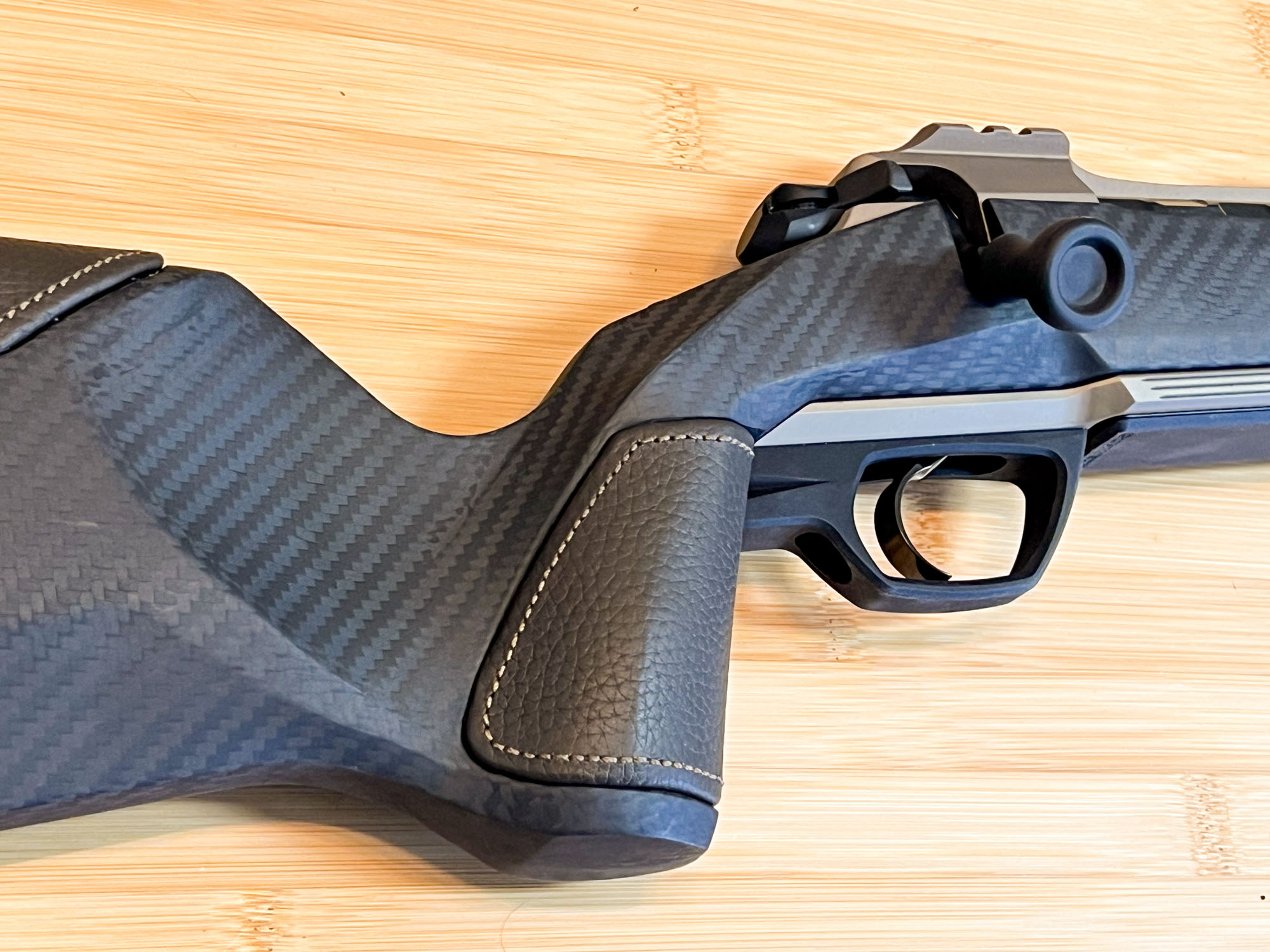
Adjustable Length of Pull
The Nexus comes with a good recoil pad that establishes the length of pull at 13.5 inches. You can add up to two ¼-inch spacers between the pad and stock to set the length of pull to 13.75 or 14 inches if desired.
QD Cups
Traditional swivel studs are one of my pet peeves. The sooner they vanish from our rifles, the better. I’ll spare you the full rant, but QD cups—which are nearly universal on precision rifles—are superior in every way.
The Nexus incorporates three QD mounting points, one on the fore-end rail located between the Picatinny and ARCA rail sections, and one on either side of the butt.
Gunwerkrs Nexus Cartridge Selection
Guess what the Nexus isn’t chambered in? The .30/06, .270 Winchester or any other fusty classic. Instead, the company is leaning into the advantages of rounds built along the principles of Modern Cartridge Design, and is initially chambering the Nexus in 6.5 PRC, 7 PRC, and 300 PRC.
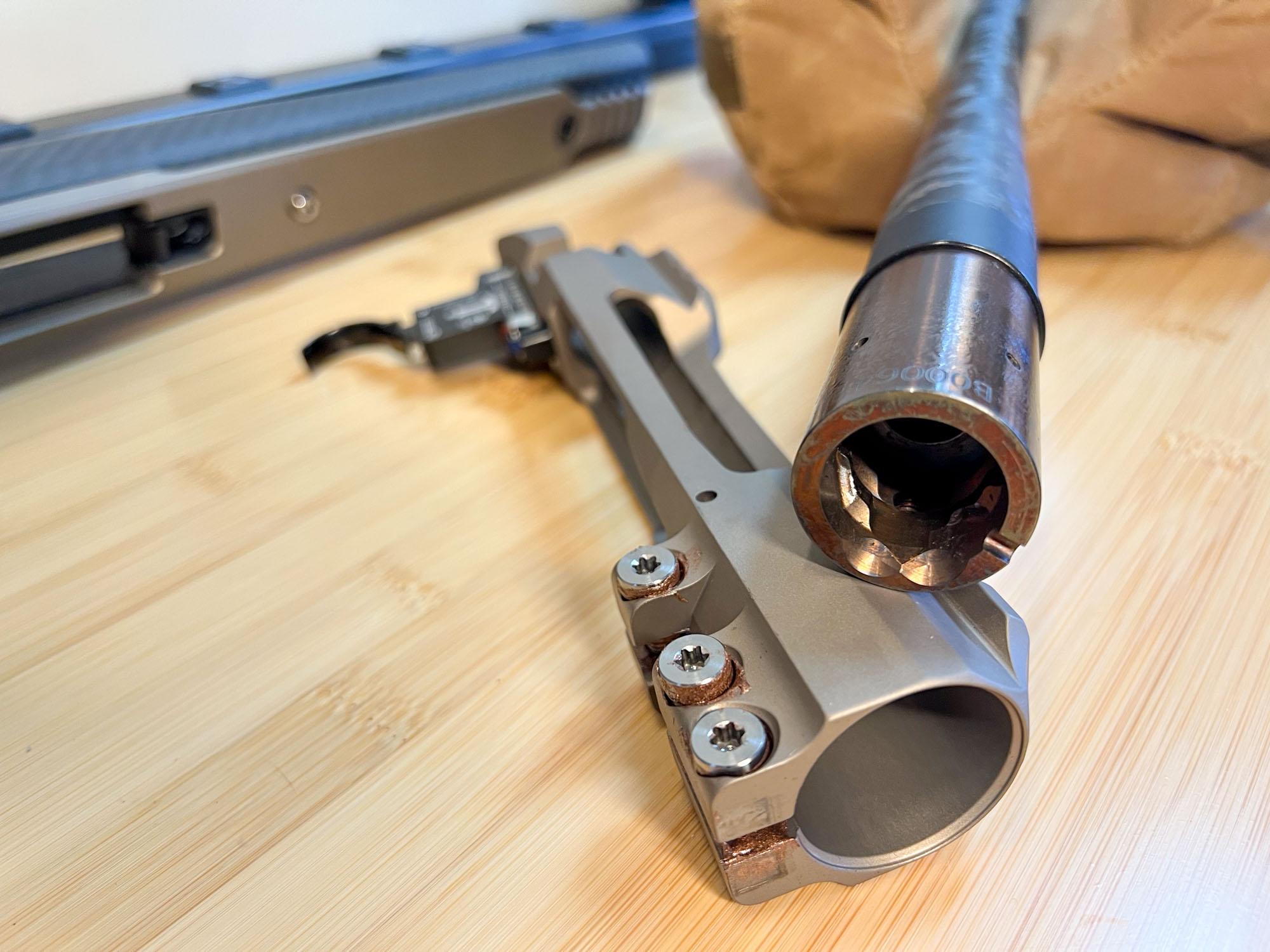
How the Gunwerks Nexus Performs
It would be a disappointing conclusion to this review if these features I enumerated were wasted on a rifle that didn’t shoot well. Fortunately, that’s not the case.
Flawless Cycling and Reliability
The rifle loads easily, cycles rounds readily, and extracts and ejects them with authority. To work in conjunction with the double-stack magazine, which feeds rounds from one side and then the other, the barrel extension is machined with dual feed ramps to guide cartridges smoothly into the chamber.
The rifle has no issue stripping rounds from the magazine as one of the lugs is pointed straight down while the bolt moves forward creating ample engagement between the head of the case and the bolt head.
The extractor is a small spring-loaded claw that doesn’t look like much but had no issues pulling brass from the chamber.
The Nexus has dual plunger ejectors, one at 6 o’clock and the other at 11 o’clock, that kicked empties free of the ejection port after every shot.
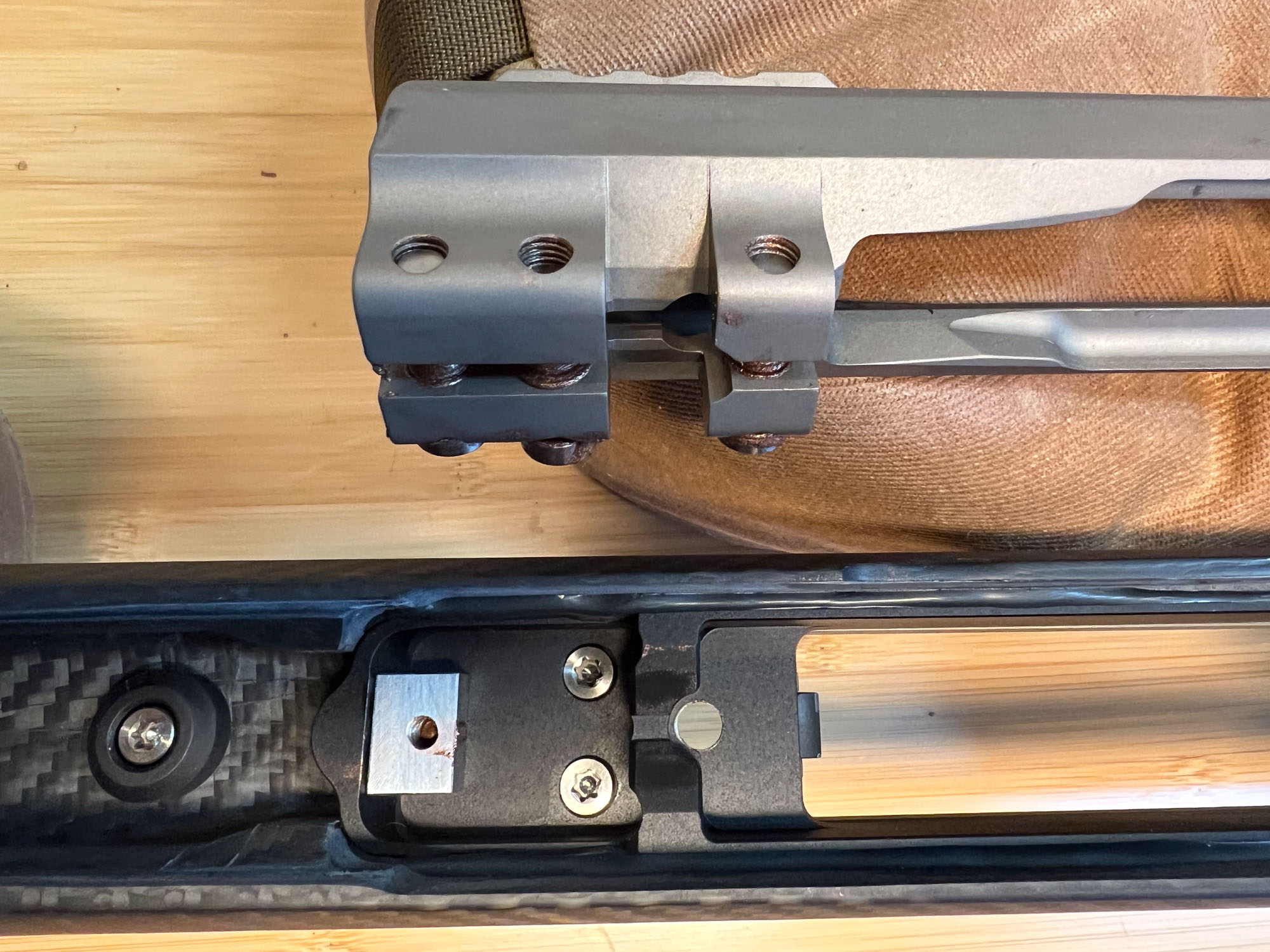
Solid Recoil Management
In addition to the nearly vertical grip, which helps the shooter manage recoil, the stock has a negative comb so that when the rifle recoils backwards it doesn’t slap the shooter’s face and pivot up. Instead, it tracks straight back.
This is a rifle that likes to be driven hard. The more pressure I added with my grip and my face to the stock the better the Nexus behaved. I found this to be the case both while shooting from the bench and during positional shooting. When running it with a firm hand, its accuracy improved and I recovered my sight picture more rapidly.
Gunwerks Nexus Accuracy and Speed
I shot three different loads through the Nexus to access its accuracy. That included Hornady’s 143-grain ELD-X hunting load, and their 147-grain ELD-M match load. I also shot factory Berger 156-grain EOL ammo through it.
The overall average group size of the 10 best five-shot groups was .749 inches. One thing I really like about the rifle is that it didn’t show a marked preference for one load over the other. Its three smallest groups included one with each type of ammo.
The Berger 156s averaged 2708 fps from the rifle (measured with the new Garmin Xero C1 Pro chronograph) with an overall average group size of .708 inches. The Hornady 147s shot at 2773 fps with an overall average group size of .751 inches. And the Hornady 143-grainers averaged 2847 fps while producing five-shot groups that averaged .929 inches.
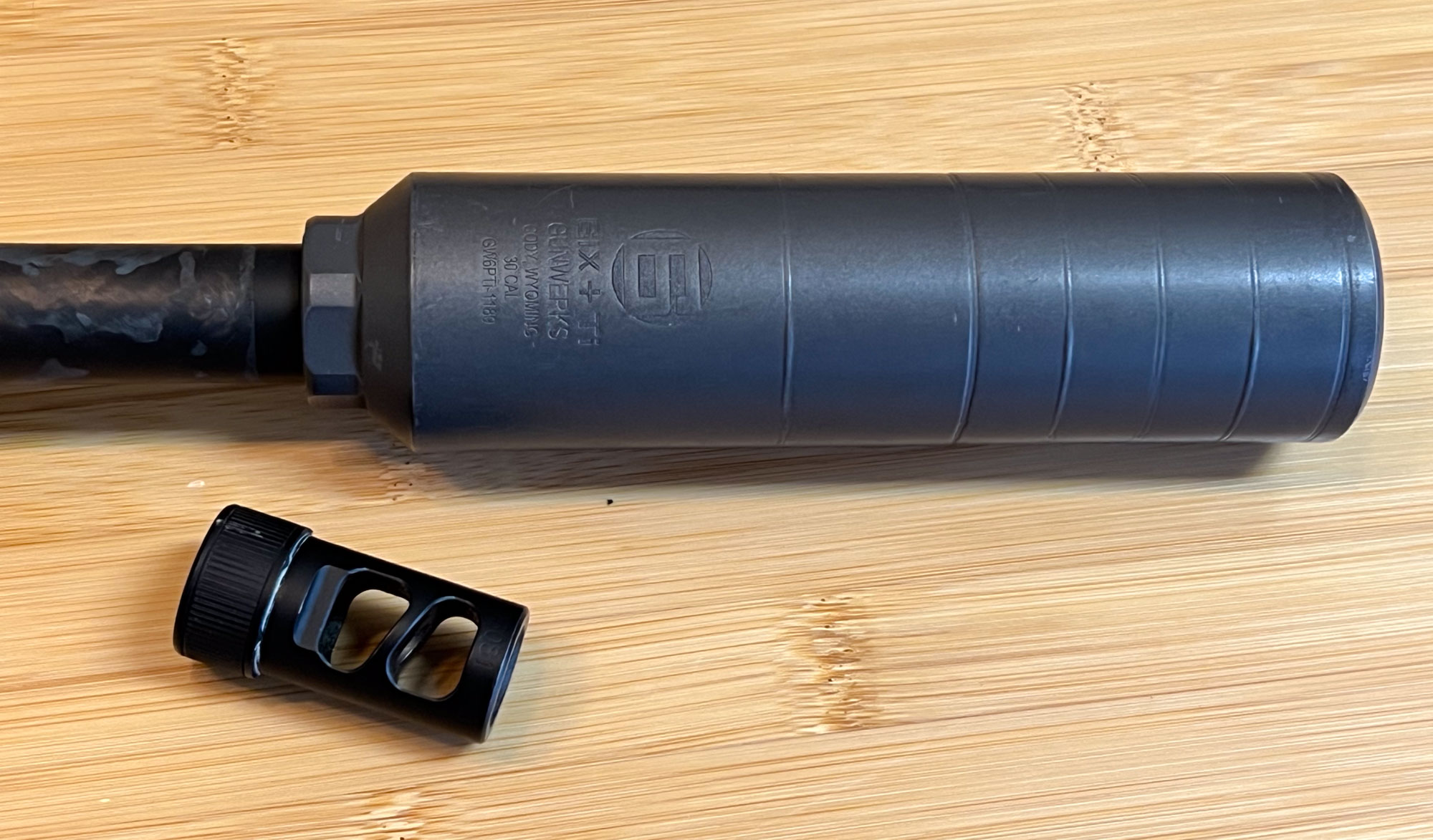
Gunwerks Nexus Pros and Cons
Pros
- Smart design
- Great blend of features for hunters and shooters
- Accurate
- Visually arresting
- Forward thinking
Cons
- Safety stiff when moving from “fire” back to “safe”
- Expensive
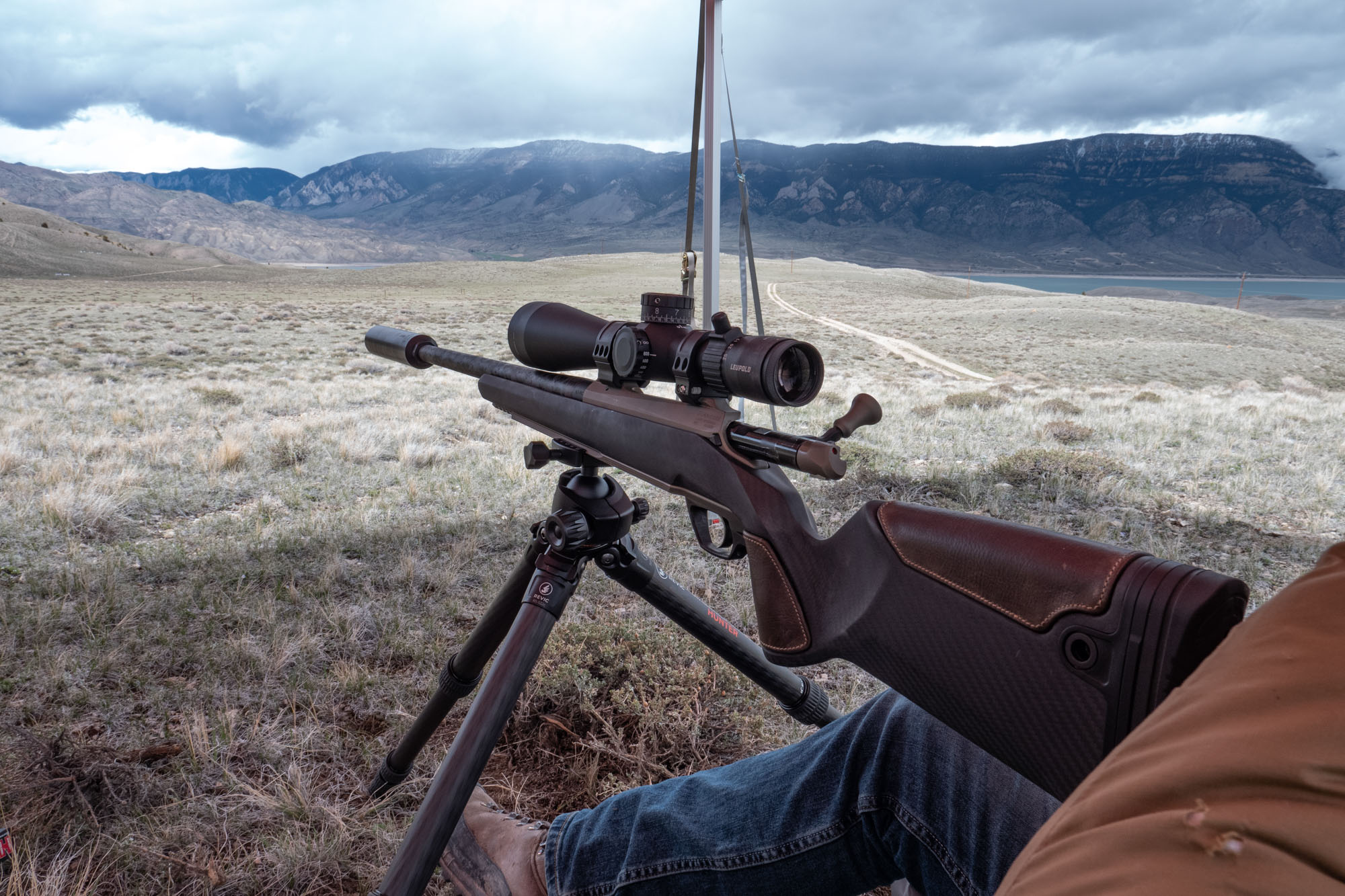
Final Thoughts on the Gunwerks Nexus
For a gun nerd who likes to shoot and hunt and who appreciates quality equipment, the Gunwerks Nexus is a home run. Its excellent ergonomics, thoughtful design, fine accuracy, and portability make it a rifle I look forward to using and carrying afield.
Producing any new product—even a seemingly simple item—is surprisingly difficult. You’d be amazed at the gremlins that will crop up when bringing a new magazine or holster to market. Something as complex as a complete rifle is a veritable minefield of potential snafus.
The fact that Gunwerks built the Nexus from the ground up—it truly is a new design—while taking risks with its look and configuration, is something I appreciate and applaud.
Gunwerks deserves a lot of credit for the Nexus. Though it won’t resonate with everyone—and as I said earlier it isn’t supposed to—it is a marvelous expression of what a modern hunting rifle can be.

